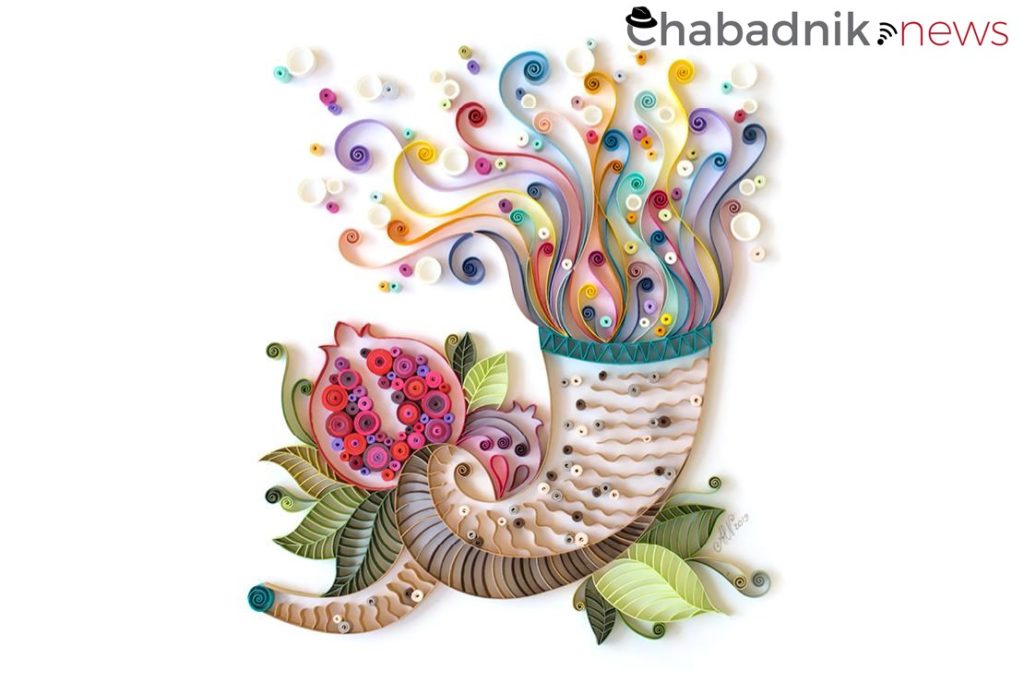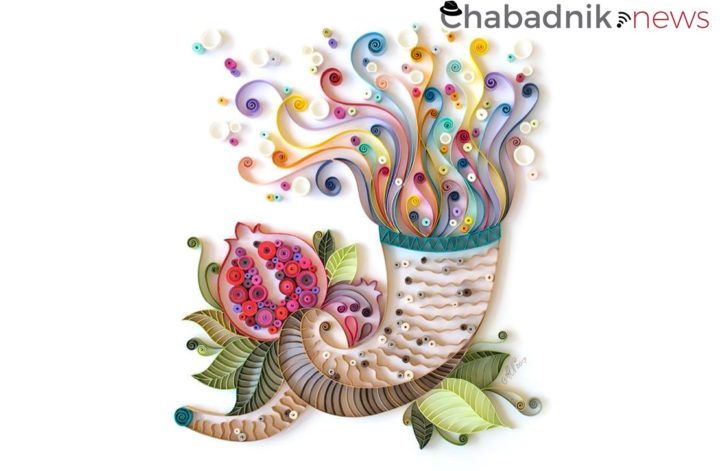
For many of us, the High Holidays will look quite different this year. But even if we won’t be able to hear Kol Nidrei in a packed shul, or celebrate Simchat Torah with the Torah as a community, the power of the month of Tishrei remains undiminished. This year, we are called upon to lead those services ourselves, to experience the highlights of the Jewish New Year in a more intense and individualized way than ever before. The following is a guide to the month ahead, and a few prompts to practice and ponder the profoundly personal themes of the coming festivals.
***
Rosh Hashanah
Sep 7-8
Practical: As the year 5782 approaches, make sure you’ve got all your holiday supplies ready to go: First, check with your local Chabad to see if there will be a safe shofar-blowing service near you, on Sunday. (Find your local Chabad center at: www.lubavitch.com/centers) Then you’ll need a machzor (book of the special High Holiday prayers), a new fruit to eat on the second night of Rosh Hashanah, and plenty of apples and honey for a sweet new year!
The cataclysmic events of the past year were a reminder of our limitations. For all the planet-spanning achievements of modernity, the world remains a vast place, untamed, and full of unknowns.
Still, there is a divine plan for the cosmos, and the New Year is a time to reflect on our place in it. This is the central drama of the day: G-d is yet vaster and essentially unknowable, but for some reason He is interested in us. Are we interested in Him?
Shabbos Shuva
Sep 11
Practical: Experience the first regular Shabbos of the year in full, beginning with candle-lighting and Kiddush Friday night, and ending with Havdalah the following night. Make sure you have a siddur (prayer book) and a Chumash (Deuteronomy) at home, and read through the poetic Torah reading of Ha’azinu, followed by the prophet Hosea’s haunting call to Teshuvah in the Haftorah.
During the Ten Days of Repentance, and especially the Shabbos before Yom Kippur, we don’t only repent to G-d. If we have wronged others, we must make amends with them before we truly practice Teshuvah, Return to G-d.
With social life utterly disrupted, reaching out to others—virtually or in the real world—has become more important than ever. Distancing measures have made those forms of social interaction still permitted more careful, but also more intentional. Is there anyone you know you might appreciate a phone call? Are there any relationships you can help heal?
Erev Yom Kippur
Sep 15
Practical: Eat and drink plenty of water, give extra charity, ask someone for a piece of honey cake, find a pair of non-leather shoes, and light a yahrzeit (24-hour) candle, in addition to the regular Holiday candles you light before sundown.
Fasting on Yom Kippur is only a Mitzvah when it isn’t dangerous to do so, and that means making sure to eat properly the day before! On Yom Kippur we connect with our spiritual selves, by abstaining from physical indulgences and dressing in angelic white, but today we are reminded that any true inspiration must eventually be expressed down here, in the concrete, corporeal world.
Yom Kippur
Sep 16
Practical: Abstain from eating, drinking, bathing, physical intimacy, and wearing leather shoes. Pray, wear something white, reconnect, and start over with a clean slate!
The thought of conducting a Yom Kippur service on your own can be daunting. Normally, we climb the day’s spiritual highs in concert with a congregation, from the opening strains of Kol Nidrei to the Neilah prayer’s closing crescendo, from when we let slip the bonds of last year until we resolutely set out into the next. But at its core, the Yom Kippur experience is an intensely personal one.
Indeed, the focal point of the liturgy is the singular figure of the High Priest, who enters the Holy of Holies alone, on this one day a year. In the Afternoon service, we read the story of Jonah, who returns to G-d from a place of desperate isolation—most memorably, from the “belly of the fish.” So, as you pray, try to place yourself in those same moments, in solitude, standing directly before G-d. There are some things that are just too difficult to express to other people; what is it you want to tell Him?
First Days Sukkos
September 21-22
Practical: Check in with your local rabbi to see if you can make a sukkah, outside or on a balcony. Even if you don’t have, you can definitely get your own lulav and etrog set!
For those of us in the developed world, the past few months have come as a rude awakening: The achievements of modernity are more precarious than we’re used to thinking, and that the security stolid predictability of our lives is something of an illusion.
On Sukkot we move out of the safety of houses and into a smally, flimsy, transient structure— the sukkah. It is a reminder of how G-d provided our people with shelter after the Exodus, and a symbol for all of temporal existence. Perhaps, after all is said and done, it’s only by trusting in a Higher Power that we can find true peace of mind, and a lasting sense of security.
Chol Hamoed Sukkos
October 23-27
Practical: The intermediate days aren’t a formal festival—most weekday activities are permitted —but they are still part of Sukkot. We continue to shake the lulav each day, eat in the sukkah, and enjoy a glass of wine every night!
The Torah instructs us to dwell in the sukkah as we would live in our homes. Thus on Sukkot the ordinary activities that constitute everyday life—eating, drinking, even sleeping—are transformed into fulfillment of a divine command. In this way the festival re-emphasises one of the vital lessons of these times: Jewish life isn’t limited to the synagogue or even the house—it extends to the street, to our front porches, and backyards. How can we bring the sacred into our mundane lives the rest of the year?
Shmini Atzeres and Simchas Torah
September 28-29
Practical: Time to say goodbye to the sukkah. In our Amidah prayers, we begin to acknowledge the miracle of rain, and celebrate an extra holiday dedicated to celebrating the Torah.
The Torah is the source of Jewish life and learning. But instead of spending the day immersed in study, the tradition is to dance with the Torah even as the scrolls remain closed. That’s because just to have the gift of the Torah, just to be Jewish, is something worth celebrating. Even without a scroll at home, even without any Jewish books at all, even without knowledge of Hebrew—the Torah is still yours. Isn’t the same thing true of life? Even when things get tough, the gift of life is its own joy; there’s always something to celebrate.
Source: https://www.lubavitch.com/home-alone-on-the-holidays/



